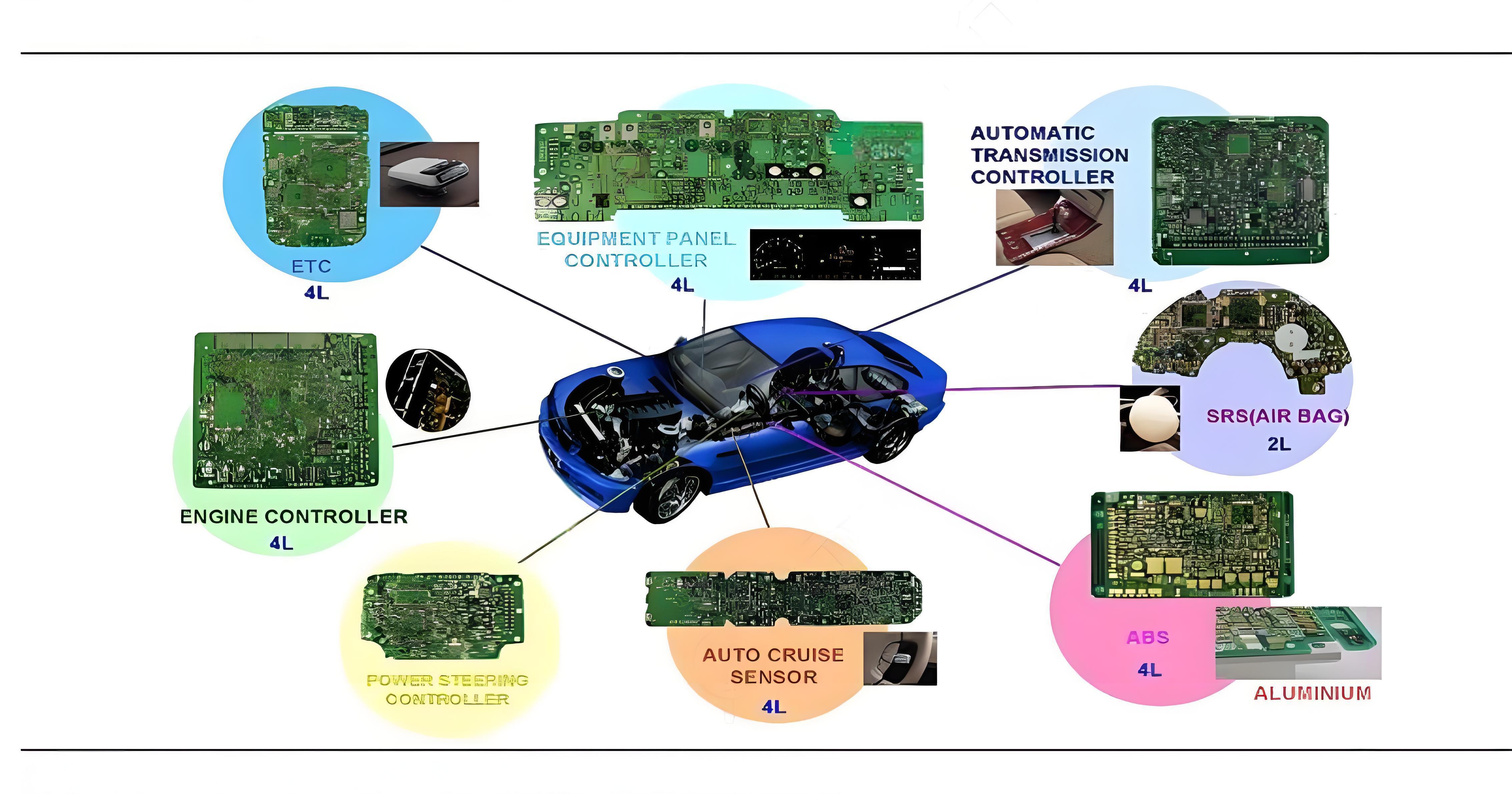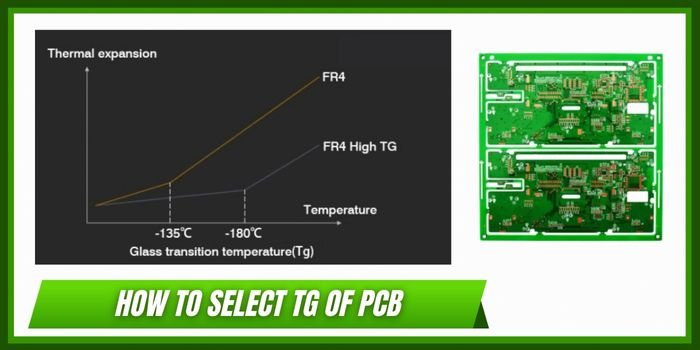In the fast-evolving world of automotive technology, Advanced Driver Assistance Systems (ADAS) are at the forefront of improving vehicle safety and performance. These systems rely heavily on high-performance electronics, and at the heart of those electronics are printed circuit boards (PCBs). To meet the demanding requirements of ADAS, advanced PCB materials are critical. This blog explores the role of advanced PCB materials in ADAS, focusing on high-frequency materials, low-loss dielectrics, and high-Tg materials for automotive PCB applications. We'll dive into why these materials matter and how they enhance the reliability and efficiency of ADAS in modern vehicles.
Whether you're an engineer designing automotive systems or a professional seeking to understand the latest trends in PCB technology, this guide will provide detailed insights into the materials shaping the future of automotive electronics.
What Are ADAS and Why Do They Need Advanced PCB Materials?
Advanced Driver Assistance Systems, or ADAS, are technologies designed to enhance vehicle safety and assist drivers with tasks like parking, lane-keeping, collision avoidance, and adaptive cruise control. These systems use a combination of sensors, cameras, radar, and LIDAR, all of which depend on high-speed, reliable electronic circuits.
The automotive environment is harsh, with extreme temperatures, vibrations, and humidity. On top of that, ADAS components must process data at lightning-fast speeds to ensure real-time responses. This is where advanced PCB materials come in. Standard PCB materials often can’t withstand these conditions or support the high-frequency signals required for ADAS. Specialized materials like high-frequency materials and low-loss dielectrics ensure minimal signal loss and maintain performance, while high-Tg materials provide thermal stability under high heat.

The Role of High-Frequency Materials in Automotive PCB for ADAS
High-frequency materials are essential for ADAS applications because they support the rapid data transmission needed for real-time processing. ADAS systems often operate at frequencies above 1 GHz, especially for radar and 5G connectivity. At these frequencies, signal integrity becomes a major concern. Poor materials can lead to signal loss, interference, or delays, which are unacceptable in safety-critical systems.
High-frequency materials are designed to have a low dielectric constant (Dk) and low dissipation factor (Df). For example, materials with a Dk of around 3.0 to 3.5 and a Df below 0.003 are often used in ADAS PCBs to minimize signal distortion. These properties ensure that signals travel at high speeds—sometimes exceeding 5 Gbps—without significant degradation. This is crucial for radar systems in ADAS, which rely on precise signal timing to detect obstacles accurately.
Using high-frequency materials also helps reduce electromagnetic interference (EMI), a common issue in the crowded electronic environment of a vehicle. By maintaining signal clarity, these materials ensure that ADAS functions like blind-spot detection and emergency braking work flawlessly.
Low-Loss Dielectrics: Enhancing Signal Efficiency in ADAS
Another critical category of advanced PCB materials for automotive PCB designs is low-loss dielectrics. These materials are specifically engineered to reduce energy loss during signal transmission, which is vital for high-speed applications in ADAS. Signal loss, often measured as insertion loss, can degrade performance and lead to errors in data processing.
Low-loss dielectrics typically have a dissipation factor (Df) as low as 0.001 to 0.002, compared to 0.02 or higher in standard materials. This means less energy is lost as heat, and more of the signal reaches its destination intact. For ADAS systems that rely on high-speed communication between sensors and control units, this efficiency is non-negotiable. For instance, in a system operating at 10 Gbps, even a small loss can result in data errors, potentially delaying a critical response like automatic braking.
Additionally, low-loss dielectrics help maintain impedance control, which is the measure of opposition to signal flow in a circuit. Stable impedance—often targeted at 50 ohms in high-speed designs—ensures consistent performance across the PCB. This is especially important in multi-layer PCBs used in ADAS, where signals must travel through complex pathways without distortion.

High-Tg Materials: Ensuring Thermal Stability in Harsh Automotive Environments
The automotive environment exposes PCBs to extreme temperatures, especially under the hood or near powertrain components. Temperatures can range from -40°C to over 125°C, and standard PCB materials often fail under such conditions, leading to delamination or cracking. This is where high-Tg materials shine.
Tg, or glass transition temperature, is the point at which a PCB material shifts from a rigid to a more flexible state. High-Tg materials have a Tg value of 170°C or higher, compared to 130°C for standard materials. This higher threshold ensures that the PCB remains stable and doesn't deform or lose mechanical integrity during thermal cycling. For ADAS systems, which must operate reliably for years under varying conditions, high-Tg materials are a must.
Thermal stability also impacts the longevity of solder joints and components on the PCB. High-Tg materials reduce the risk of thermal expansion mismatch, which can cause cracks or failures over time. In a practical sense, this means an ADAS system using high-Tg materials can endure thousands of thermal cycles—common in daily vehicle use—without performance degradation.

Why Material Selection Matters for Automotive PCB in ADAS
Choosing the right advanced PCB materials for ADAS isn’t just about meeting technical specs—it’s about ensuring safety and reliability. A failure in an ADAS system due to poor material performance could lead to catastrophic consequences, such as a delayed collision warning or malfunctioning adaptive cruise control. The stakes are high, and material selection plays a direct role in mitigating risks.
Moreover, the right materials can optimize manufacturing costs and improve design efficiency. For instance, using low-loss dielectrics might allow for fewer layers in a PCB design, reducing complexity and cost while maintaining performance. Similarly, high-frequency materials can enable smaller, more compact designs, which are critical in the space-constrained environment of a vehicle.
Engineers must balance electrical performance, thermal stability, and cost when selecting materials. Factors like dielectric constant, thermal conductivity (often around 0.5 W/mK for high-performance materials), and moisture absorption (ideally below 0.2%) all come into play. By carefully evaluating these properties, designers can create automotive PCB solutions that meet the rigorous demands of ADAS.
Challenges in Using Advanced PCB Materials for ADAS
While advanced PCB materials offer significant benefits, they also come with challenges. One major hurdle is cost. High-frequency and low-loss materials are often more expensive than standard options, which can impact the overall budget of an ADAS project. However, the trade-off is improved performance and reliability, which are priceless in safety-critical applications.
Another challenge is manufacturability. Advanced materials may require specialized fabrication processes, such as tighter control over lamination temperatures or specific drilling techniques to avoid damaging the material. This can increase lead times and require close collaboration between designers and manufacturers to ensure quality.
Lastly, integrating these materials into existing designs can be complex. Engineers must account for compatibility with other components, ensuring that the entire system—from connectors to solder masks—works seamlessly with the chosen PCB material. Overcoming these challenges requires expertise and a deep understanding of both material properties and ADAS requirements.
Future Trends in PCB Materials for ADAS and Automotive Applications
As ADAS technology continues to advance, so too will the demand for cutting-edge PCB materials. One emerging trend is the development of ultra-low-loss dielectrics with dissipation factors below 0.001, aimed at supporting even higher frequencies for next-generation radar and 5G systems. These materials will be critical as vehicles become more connected and autonomous.
Another trend is the push for environmentally friendly materials. With sustainability becoming a priority in the automotive industry, researchers are exploring recyclable and bio-based PCB materials that maintain high performance while reducing environmental impact. This aligns with broader industry goals of reducing waste and energy consumption.
Finally, the integration of advanced thermal management solutions within PCB materials is gaining traction. Materials with enhanced thermal conductivity—sometimes exceeding 1.0 W/mK—are being developed to dissipate heat more effectively in densely packed ADAS electronics. This will be essential as systems become more powerful and compact in the future.
Conclusion: Building the Future of ADAS with Advanced PCB Materials
The success of Advanced Driver Assistance Systems in the automotive industry hinges on the performance and reliability of the underlying electronics. Advanced PCB materials like high-frequency materials, low-loss dielectrics, and high-Tg materials are the foundation of these systems, enabling high-speed data transmission, thermal stability, and long-term durability in the challenging automotive environment.
For engineers and designers working on automotive PCB solutions for ADAS, selecting the right materials is a critical step in ensuring safety and efficiency. By leveraging the latest advancements in PCB technology, the automotive industry can continue to innovate, paving the way for safer, smarter vehicles.
At ALLPCB, we're committed to supporting the development of high-performance electronics with cutting-edge PCB solutions tailored to the needs of ADAS and beyond. Whether you're tackling signal integrity challenges or thermal management issues, our expertise and resources are here to help bring your designs to life.
 ALLPCB
ALLPCB







